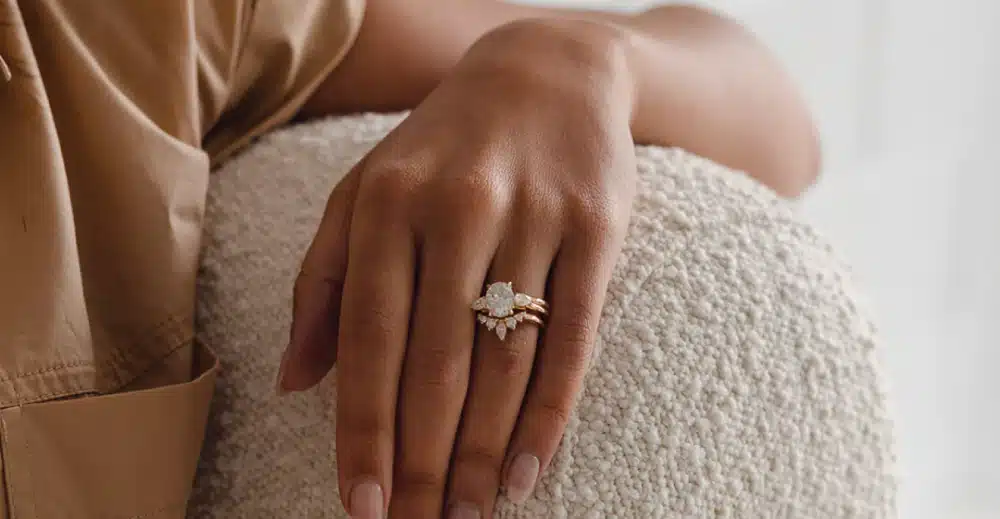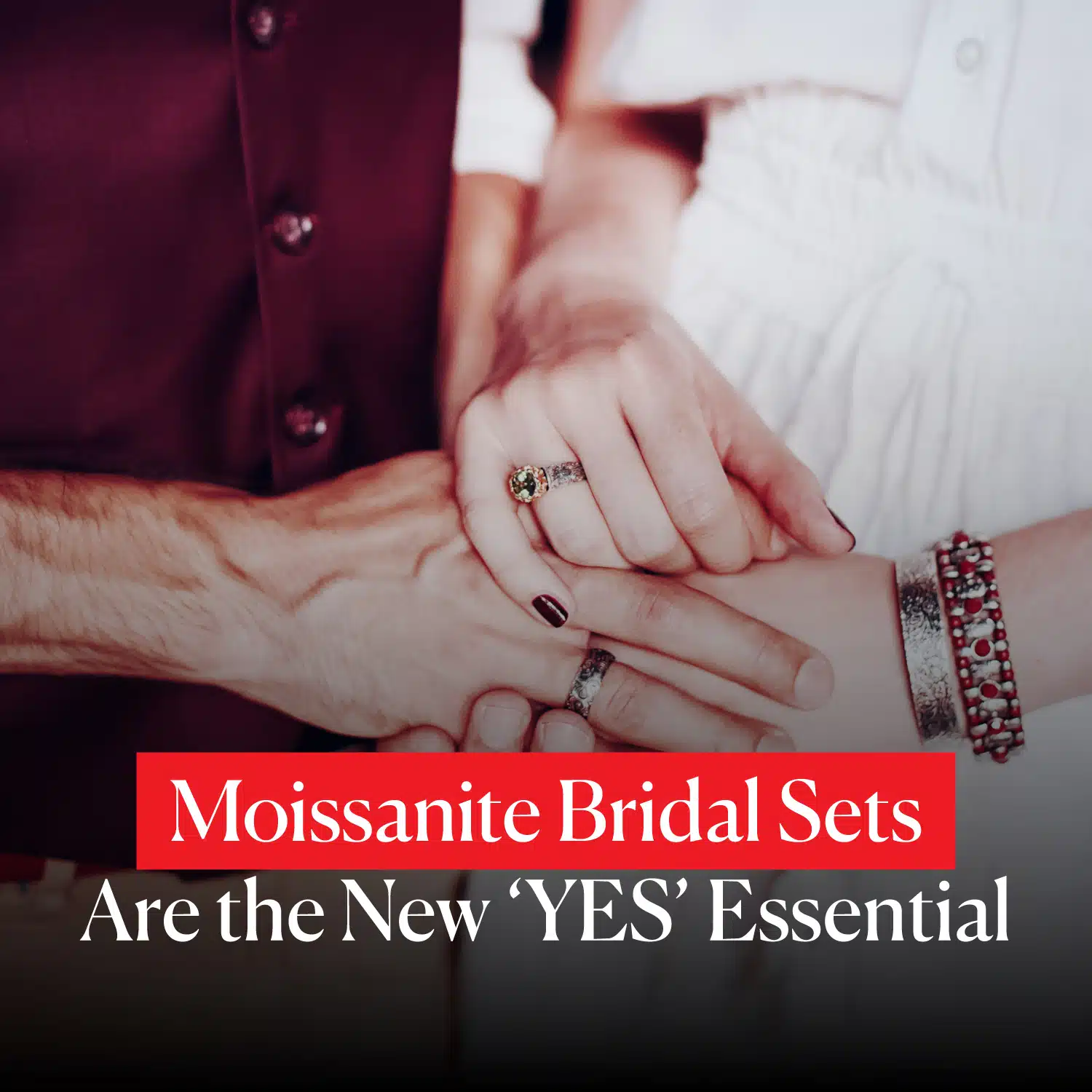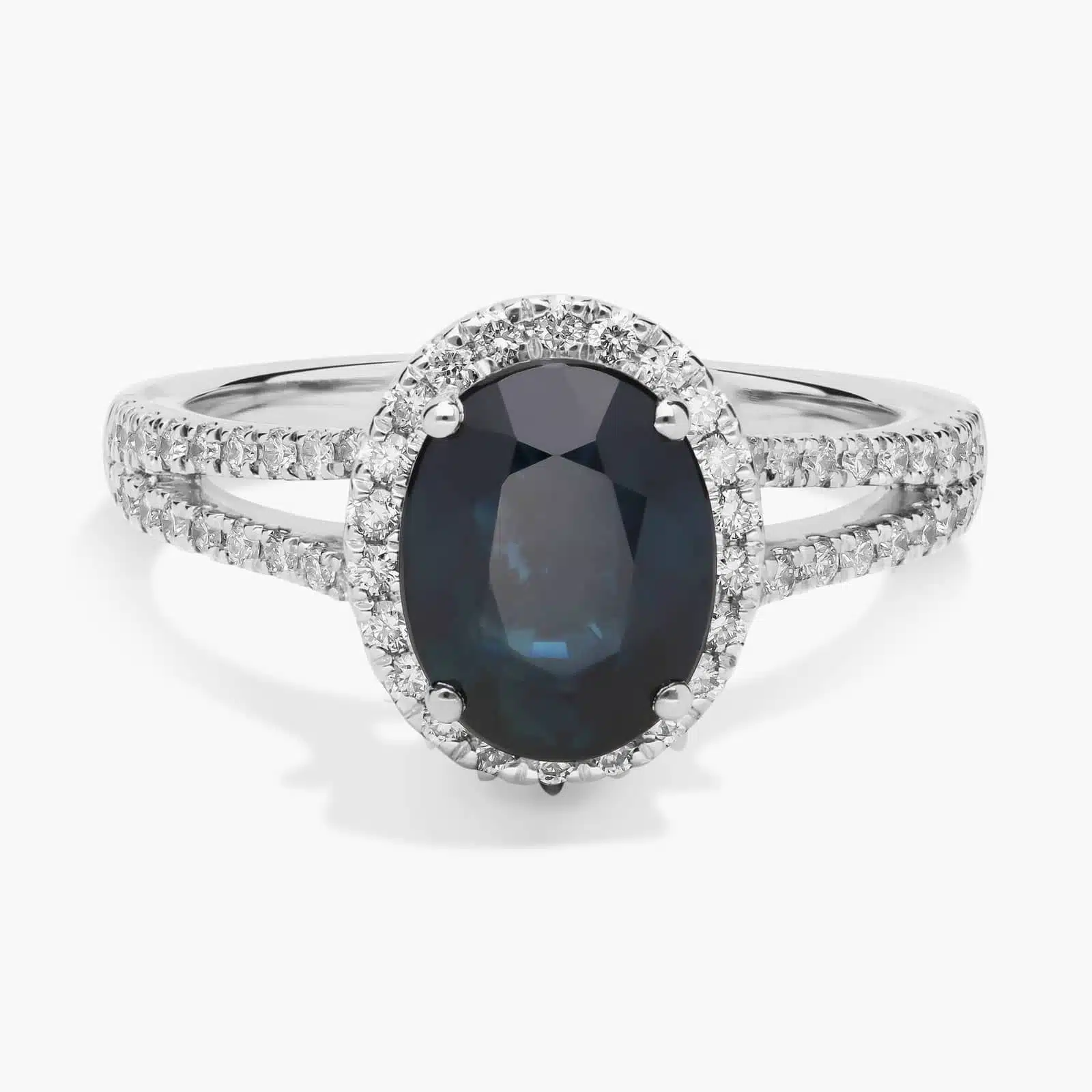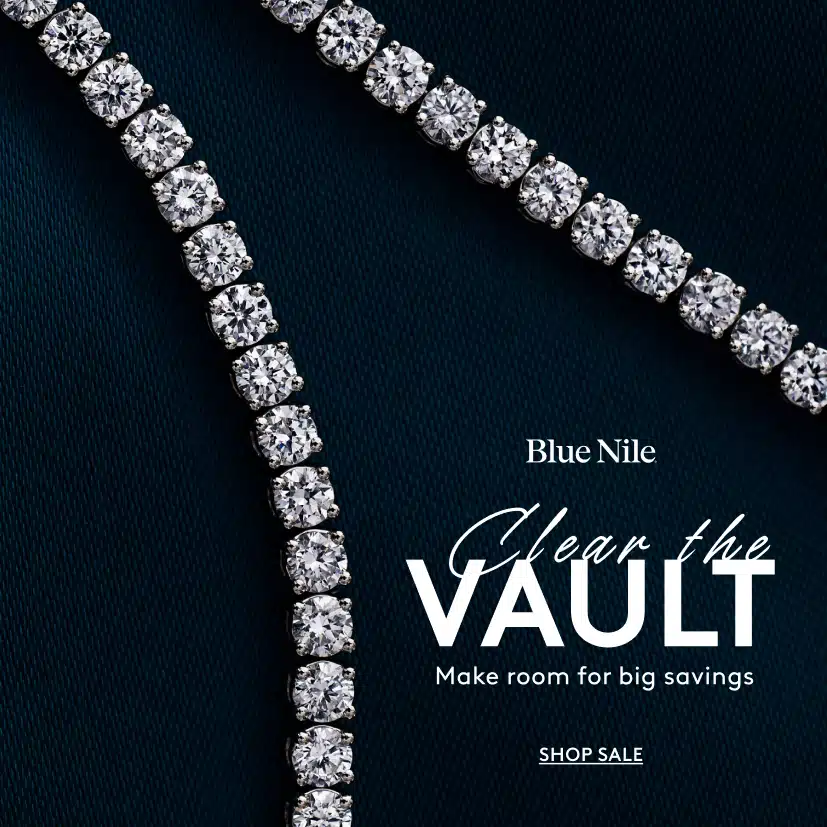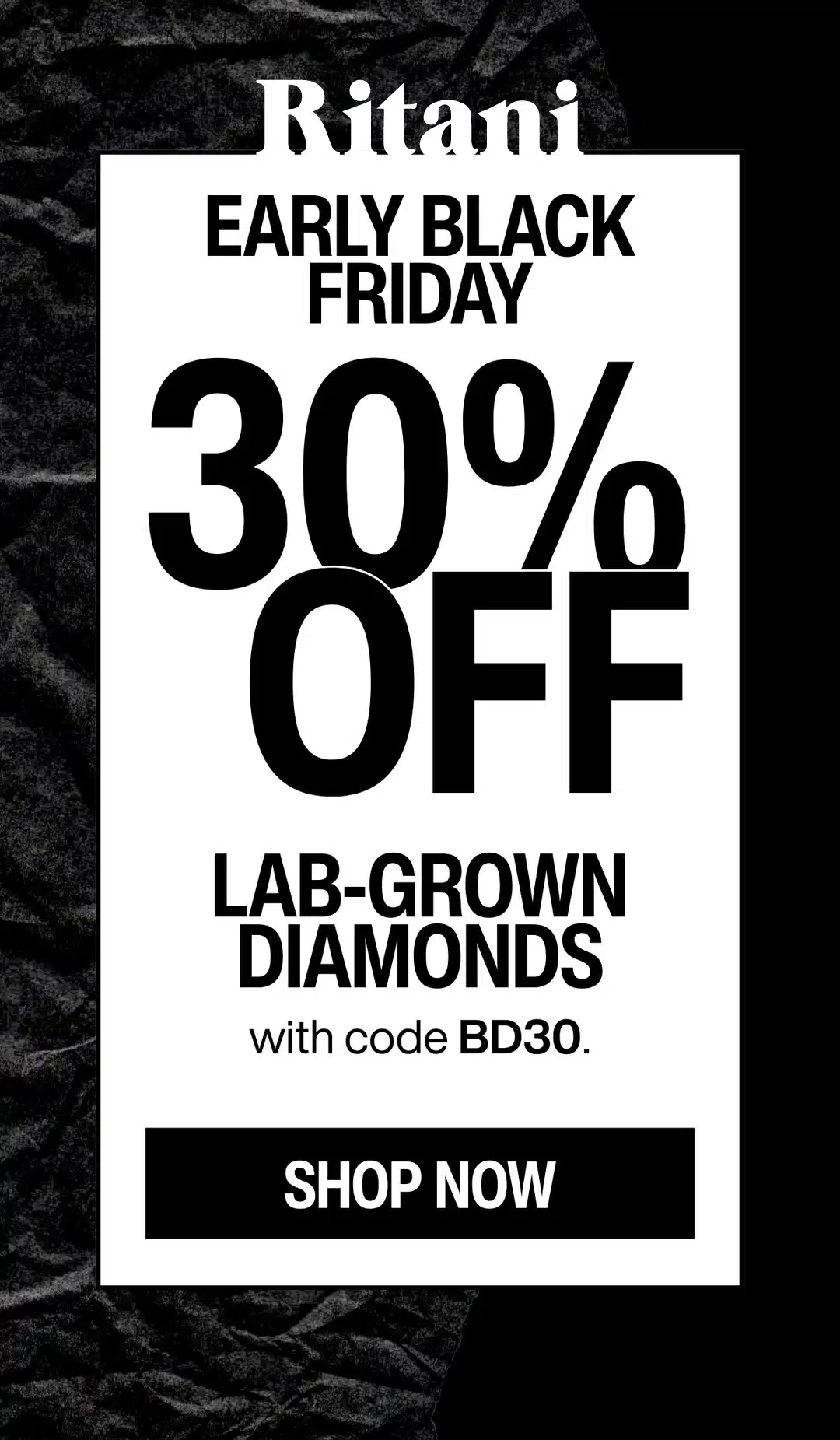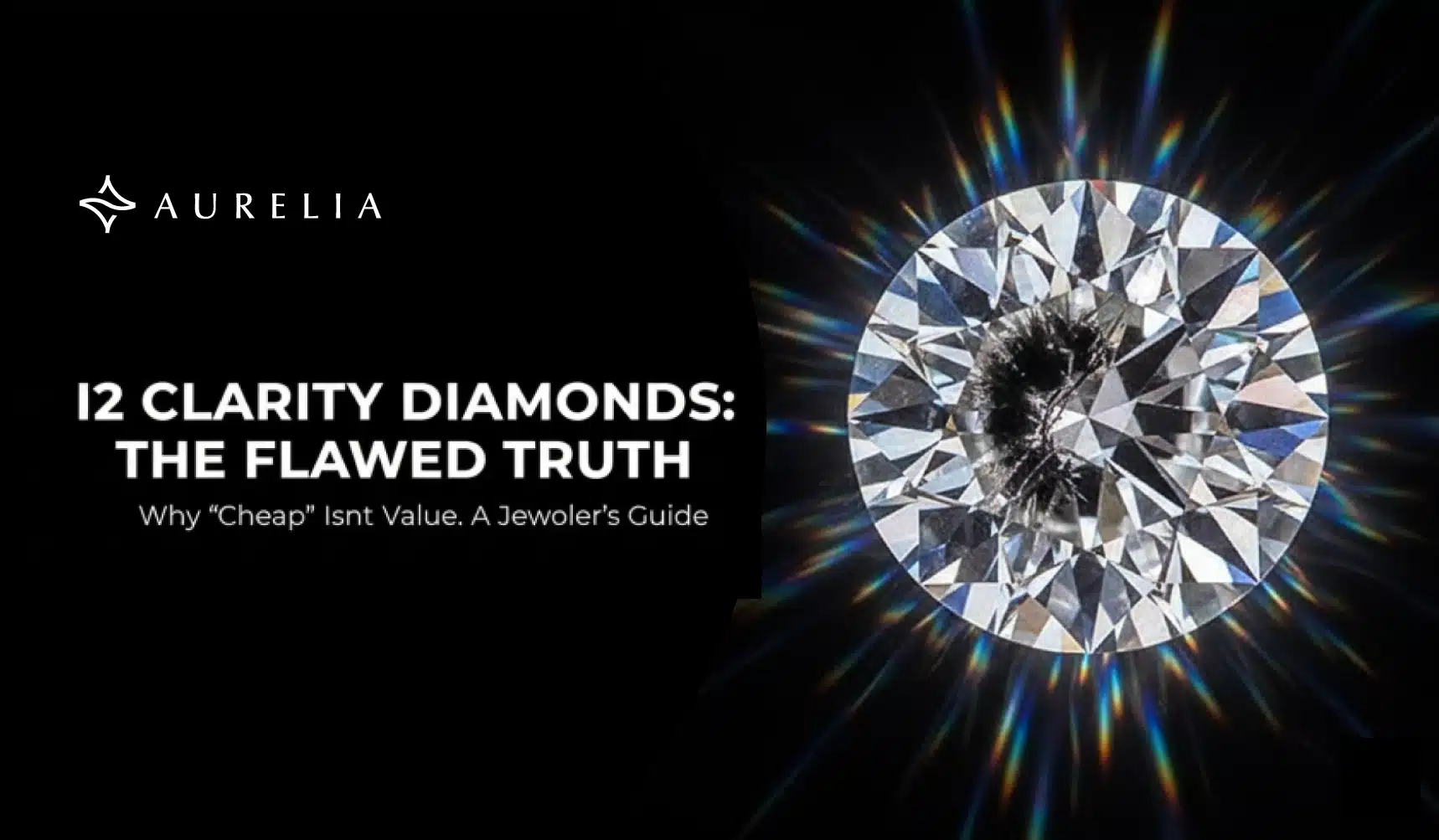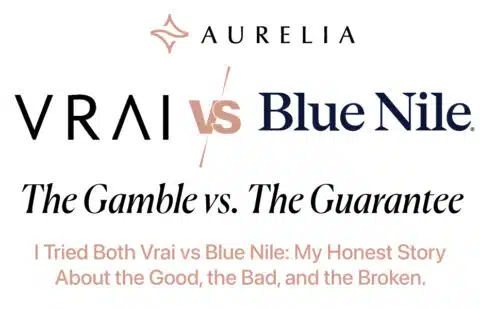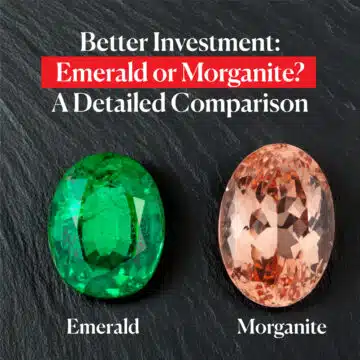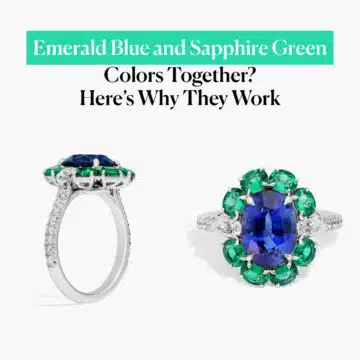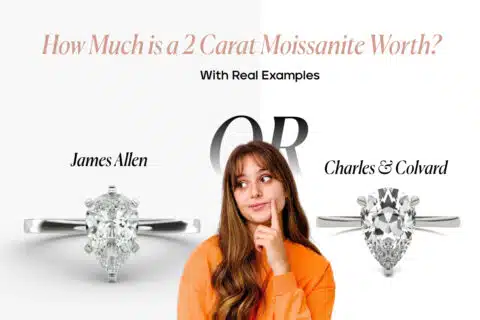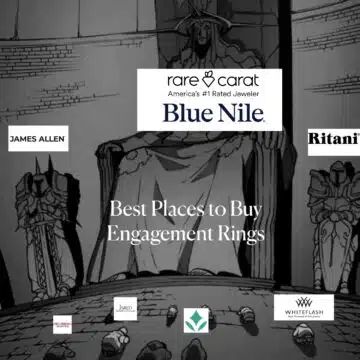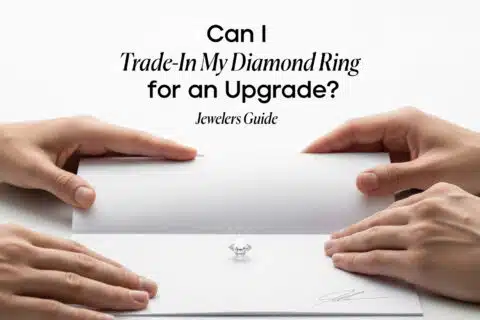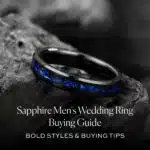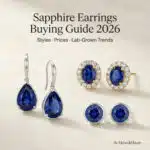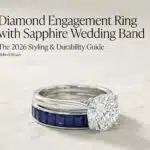Are i2 diamonds worth buying? For an engagement ring or any piece of fine jewelry where the diamond is the centerpiece, the answer is a brutally honest and unequivocal no. An I2 diamond has flaws that are not just visible under a microscope; they are visible to the naked eye, and they almost always kill the diamond’s sparkle, beauty, and durability.
You’re on the hunt for the biggest possible diamond for your budget. You’re filtering through the options, and then you see it: a massive, 2-carat stone for a price that seems like a typo. It feels like you’ve discovered a secret glitch in the system.
But then you check the GIA report, and you see the catch: the clarity is “I2.” A voice in your head asks, “How bad can it really be?”
Deal Alert: Fast-Shipping Gifts — Up to 50% Off* fine jewelry at Blue Nile !
One In A Lifetime Sale: “Clear The Vault” – Get up to 70% OFF on select jewelry at Blue Nile !
Exclusive Offer: Flash Sale on James Allen Up to 40% Off * Sitewide engagement ring settings & Fine Jewelry at James Allen .
As a GIA-trained jeweler who has seen thousands of stones, I’m here to tell you: it’s that bad. Today, I’m not just going to tell you to avoid i2 diamonds; I’m going to take you on a tour of the “Hall of Shame” to show you why. I’m going to arm you with the knowledge to sidestep this devastating financial trap.
Diamond IQ Test: Natural or Lab-Grown?
Two identical diamonds: GIA Certified, 1.51ct, D Color, VVS1, Ideal Cut. One is natural ($16,530), the other is lab-grown ($2,390). Choose the diamond you like better and see if you can match it to its origin.
What Does I2 Diamond Clarity Mean? A Jeweler’s Red Alert
Before you even think about that tempting price tag, we need to have a serious, brutally honest conversation about what an I2 diamond actually is. This isn’t just another step down on the clarity ladder; it’s a fall off a cliff. When a diamond is graded I2, a professional GIA gemologist isn’t just noting a few minor flaws. They are sounding a red alert.
So let’s answer the core question—what is i2 diamond clarity—and let me show you why, as your jeweler, it sends a chill down my spine.
The GIA’s Official Definition (And What It Really Means for You)
The official i2 clarity meaning, as defined by the Gemological Institute of America (GIA), is “Included – Second Degree.” That’s the clinical, polite, scientific term. But I’m not here to be polite; I’m here to protect your wallet and your once-in-a-lifetime moment.
Here’s the real, unfiltered Mehedi translation: it means a grader can see large and/or numerous inclusions very easily, both under 10x magnification and with the naked eye.
Let me give you a powerful analogy. In my guide to the I1 clarity diamond, I described an I1 as a noticeable red wine stain on a beautiful white carpet. An I2 is much, much worse.
Best Deal Of The Year – Final Days
Blue Nile’s “Clear The Vault” is ON.
Shop Fine Jewelry Upto 70% OFF.
*Exclusions may apply. See Blue Nile for complete details.
An i2 clarity diamond is a shattered mirror.
Think about that for a second. The damage isn’t just a surface flaw; it goes right to the very structure and purpose of the object. A shattered mirror can no longer do its primary job of reflecting a clear, beautiful image back at you. It is fundamentally compromised.
That is what a major inclusion in an i2 clarity in diamonds does. It cripples the diamond’s ability to reflect light, killing the sparkle you’re paying for.
The Official Diamond Clarity Chart: Life at the Bottom
To truly understand why an i2 diamond is in a class of its own, you have to see where it lives on the official GIA hierarchy. This isn’t just a list; it is a map of rarity, risk, and—at the very bottom—disaster.
| Clarity Tier | GIA Grade | Mehedi’s Take: The “Neighborhood” |
| Flawless Tier | FL / IF | The Collector’s Penthouse. Perfect but pricey. |
| VVS Tier | VVS1 / VVS2 | The Luxury High-Rise. Visually perfect, on-paper perfection. |
| VS Tier | VS1 / VS2 | The Smart Buyer’s Suburb. The “sweet spot” for value. |
| SI Tier | SI1 / SI2 | The Value Hunter’s Frontier. Great deals can be found. |
| Included Tier | I1 / I2 / I3 | The Red Alert Zone. For Side Stones ONLY. |
In every tier from SI on up, the game is about finding an “eye-clean” diamond. The flaws are there, but they are minor and well-hidden. The moment a diamond’s grade crosses the line into the diamond clarity i1 i2 tier, that entire rulebook is thrown out the window.
The GIA is officially telling you that the flaws are now the main characters. They are no longer a side note; they are the headline. This is why you will rarely, if ever, see reputable online jewelers like Blue Nile or James Allen even offer loose I2 diamonds for sale as a center stone.
They know the i2 diamond quality is a recipe for a disappointed customer. You can see this whole clarity hierarchy in context on my complete Diamond Color and Clarity Chart.
This isn’t a value proposition. This is a warning siren. And in the next section, I’m going to show you the exact disasters that siren is warning you about.
James Allen: Our 5-Star Choice for Price and Selection
Check our comprehensive James Allen Review to learn more about their pricing and commitment.
The Three Flaws That Make an I2 Diamond a “Hard No”
We’ve established that the I2 clarity grade is the “Red Alert Zone” on a GIA report. But what does that look like? What are the actual, tangible disasters that make a jeweler like me instinctively recoil when I hear “I2”?
Welcome to what I call the “Hall of Shame.” These aren’t minor imperfections. These are the three catastrophic, non-negotiable flaws that plague the world of i2 diamonds, and I am going to teach you how to spot them so you can protect yourself from a heartbreaking and costly mistake.
Flaw #1: They Are “Sparkle Killers”
This is the most fundamental betrayal of all. You buy a diamond for one reason above all others: you want it to sparkle. You want it to catch the light, to dance with fire, to be a brilliant, breathtaking beacon on your finger.
An i2 diamond quality grade almost always guarantees that this will not happen.
Here’s the simple science: a diamond’s sparkle is born from light entering the top, bouncing perfectly off the internal facets, and shooting back out to your eye. The entire purpose of a great diamond cut—a topic I cover in obsessive detail in my Diamond Cut Chart guide—is to perfect this path of light.
The large, numerous inclusions found in an i2 clarity in diamonds act like a series of massive roadblocks on that path.
- They Absorb Light: Dark inclusions literally suck the light out of the diamond’s core.
- They Scatter Light: Large “clouds” (dense clusters of tiny inclusions) don’t reflect light; they shatter it. Instead of a crisp, brilliant flash, you get a hazy, dull glow.
- They Obstruct Light: The very presence of these large internal flaws physically blocks light from making its journey through the stone.
Instead of a fiery, brilliant masterpiece, what you get is a “dud.” A “sleepy” or “oily” looking stone with a fraction of the life and sparkle of a higher-clarity diamond. The very soul of the diamond has been compromised.
Imagine seeing a stunning 2 Carat Princess Cut Diamond at an unbelievably low price. The Cut grade is “Excellent,” so it should be a sparkler. But it has i2 diamond clarity. Instead of a vibrant fire, it will have a muted, hazy glow. The catastrophic clarity has completely negated the power of its excellent cut.
Read Our 5-Star Blue Nile Review
Check our comprehensive Blue Nile review to learn why we rated Blue Nile 5 stars for their exceptional quality and value.
Flaw #2: They Are Structural “Time Bombs”
This is the competitor content gap that absolutely terrifies me, and it should terrify you, too. This is the flaw that can turn a “bad deal” into a “total loss” in a single, sickening instant. An I2 diamond isn’t just less beautiful; it is often less durable.
Many i1 and i2 diamonds are given that low grade because their inclusions are not just tiny crystals or clouds, but significant structural flaws.
The two main culprits you need to know about are:
- Feathers: These are not pretty, fluffy things. A “feather” is the industry term for a fracture or crack inside the diamond.
- Cavities: These are literal holes or openings on the surface of the diamond.
If one of these flaws is large, or if it reaches the surface of the diamond, especially near the thin edge (the “girdle”) or at the sharp point of a Pear Shaped or Marquise Cut diamond, it creates a critical point of weakness.
A single, hard knock against a granite countertop—an accident that a high-quality diamond would easily survive—can cause that fracture to propagate, leading to a disastrous chip or, in a worst-case scenario, the entire stone cleaving in two. It’s a risk I break down when discussing what things are strong enough to break a diamond.
Think about the delicate tip of a gorgeous Heart Shaped Diamond. Setting an I2 diamond with a feather near that point is like building a skyscraper on a cracked foundation. It’s not a matter of if it will fail, but when.
Flaw #3: They Are a Financial “Dead End”
This is the final, brutal truth that many sellers of low-quality diamonds don’t want to talk about. It’s about the future. An engagement ring is not just a purchase; it’s the beginning of a lifelong journey, and you want a stone that can journey with you.
An i2 clarity diamond has no future value. It is a financial dead end.
- Zero Resale Value: No reputable jeweler or pawn shop will offer you a fair price for a visibly included diamond ring. They know they cannot easily resell it. When you’re trying to figure out how much a diamond can be sold for, an I2 grade is an immediate disqualifier for a strong offer.
- Disqualified from Upgrade Programs: The world-class upgrade programs at retailers like Blue Nile, which allow you to trade in your diamond for an upgrade, have strict quality standards. A visibly included diamond i2 will almost never qualify.
When you buy an I2, you are not just buying a compromised stone; you are buying a final purchase. There is no path to upgrade it, and there is no way to recoup a fair portion of its value if you try to sell it. It is a purchase for today, with no thought for tomorrow.
The Numbers Don’t Lie: Why “Cheap” Isn’t the Same as “Value”
You’ve seen the “Hall of Shame.” You understand the catastrophic risks of a bad i2 clarity diamond. But I know what you’re thinking because it’s the most logical question in the world: “But Mehedi, they’re so much cheaper! Isn’t the savings worth the risk?”
This is the most dangerous trap in the entire diamond buying journey. To save you from it, we need to look at the cold, hard numbers. I’ve done a deep dive into the current market data, analyzing pricing from across the industry to show you why the i2 diamond price isn’t a “deal”—it’s a siren song luring you toward a costly mistake.
The Natural Diamond Price Trap
First, let’s look at the world of natural, earth-created diamonds. Here, the allure of an I2 is powerful because the price drops are so dramatic. But when you put it in context, you’ll see why it’s a false economy.
To show you this, I’ve created a price comparison for a classic 1-carat, G-H color, Excellent Cut natural diamond at different clarity grades.
| Clarity Grade | 1 Carat Price (approx.) | Is It Eye-Clean? |
| I2 Clarity | ~$2,500 | Almost Never |
| SI2 Clarity | ~$3,500 | Often (with inspection) |
| VS2 Clarity | ~$4,500 | Almost Always |
Look closely at that chart. To “save” $1,000, you are dropping from a reliably eye-clean VS2 Clarity Diamond to an i2 clarity stone that is almost guaranteed to be visibly flawed. That isn’t a smart saving; that is a catastrophic drop in quality.
- For an extra $1,000, you can jump past the i1 i2 clarity danger zone and land in the much safer, much more beautiful world of SI2 clarity, which I break down in my SI2 Diamond Clarity Chart.
- For an extra $2,000, you can buy yourself the ultimate “peace of mind” and get a stunning, guaranteed eye-clean VS2.
Here’s my brutally honest advice: if your budget for a natural diamond is $2,500, do not buy a 1-carat I2. Buy a smaller, but brilliantly clean, 0.70-carat VS1 Clarity Diamond. You will be infinitely happier with a smaller, beautiful diamond than a large, flawed one. Answering the question of how much to spend on a wedding ring is about maximizing beauty, not just size.
The Lab Diamond Price Trap: An Even Bigger, More Illogical Mistake
If buying a natural I2 is a bad deal, buying a lab-grown I2 is, frankly, one of the worst and most financially illogical decisions you can make in your entire diamond search.
The entire landscape of lab-grown diamonds has been built on the principle of making high quality accessible to everyone. The price differences between clarity grades are no longer massive leaps; they are tiny, incremental steps.
Let me show you.
Lab-Grown GIA/IGI Diamond Price (Approximate – 1 Carat, G-H Color)
| Clarity Grade | 1 Carat Lab Price (approx.) | Is It Eye-Clean? |
| I2 Clarity | ~$600 | No |
| VS2 Clarity | ~$900 | Yes |
| VVS2 Clarity | ~$1,100 | Yes |
This is the moment that should change everything for you. Please read this carefully.
Why on this green earth would anyone risk buying a visibly flawed, hazy, structurally compromised i2 diamond just to save a mere $300? For the price of a nice dinner for two, you can jump FOUR full clarity tiers from an I2 to a stunning, guaranteed eye-clean, near-flawless VVS2 lab diamond.
- It makes the diamond clarity i1 i2 debate completely irrelevant in the lab world.
- The entire question of are i2 diamonds worth buying has an undeniable, mathematical answer: NO.
The tiny savings are a sucker’s bet. The value proposition is non-existent. When you can afford a stunning, visually perfect diamond, there is absolutely zero reason to even glance at the bottom of the barrel.
It’s the difference in value that allows a savvy shopper to afford a spectacular masterpiece like a James Allen 4-Carat Diamond Ring in the lab world, because they know not to waste their time on flawed stones.
The “Side Stone” Exception: The One Time an I2 Diamond Is Okay
Alright, so I’ve spent this entire article telling you to run, not walk, away from any I2 clarity diamond. I’ve called it a “financial trap,” a “shattered mirror,” and a “hard no.” And for any diamond that is meant to be the centerpiece of your ring, I stand by that advice with every fiber of my being.
But as a jeweler, I have to be brutally honest about the one—and only one—exception to this rule. It’s where i2 diamonds are not just acceptable; they are a smart, practical, and almost universal part of the industry.
This is the “side stone” exception.
Understanding “Melee” Diamonds: The Supporting Cast
The tiny, sparkling diamonds that are used in a pavé band, a halo, or as small side stones are called “melee” (pronounced meh-lee). These stones are often just 1-2 millimeters in diameter, the size of a pinhead.
- At This Size, Clarity is Irrelevant: The stones are so small that it is physically impossible for you to see any inclusions within them with your naked eye. A VVS diamond and an I2 diamond of this tiny size will look completely identical.
- The Focus is on the Overall Sparkle: For melee, a jeweler’s goal isn’t individual perfection. The goal is to create a seamless, sparkling “pavement” of light. This is achieved by using stones that are well-cut and well-matched for color, not by obsessing over their clarity.
My Expert Verdict: It’s Okay Here, But Don’t Be Fooled
High-end online jewelers like Blue Nile and James Allen will typically use melee diamonds that fall in the SI (Slightly Included) or i1 i2 clarity range for their pavé and halo settings.
This is a good and proper practice. It keeps the cost of these intricate settings reasonable without compromising on the visual beauty, as the flaws are invisible.
Think about a stunning, intricate design like the Blue Nile Riviera Pavé Engagement Ring. That breathtaking sparkle comes from dozens of well-cut melee diamonds. You are paying for the overall effect, not the GIA certificate of each individual tiny stone.
The critical thing to remember is this: the rules for a 0.01-carat side stone do not apply to your 1.01-carat center stone. Any seller who tries to tell you, “It’s all I1 clarity, so it’s all good!” is being deeply deceptive. Accept I2 diamonds as part of the beautiful supporting cast, but never, ever accept one as the star of your show.
Deal Alert: Ritani’s current promotions offer exceptional value.
Discount applied automatically
Shop Lab Diamonds | Shop Settings| Pro Tip: Ritani offers price matching and free shipping.
The Clarity Ladder: Choosing Your Level of Risk at the Bottom
So, we’ve established that for your main diamond, I2 is out. But what about its slightly better neighbors, the I1 and the SI2? You are a savvy shopper, and your goal is to find the best possible value. This is where the real “high-risk, high-reward” game is played.
To win this game, you have to understand the dramatic difference in risk and reward between these three bottom-tier clarity grades. Let’s break it down.
Understanding I1 vs I2 and SI2 vs I2
This is a battle between “bad” and “worse.” Both i1 and i2 diamonds are defined by having inclusions that are visible to the naked eye. The difference in grade comes down to the severity, size, and number of those flaws.
- An I1 (Included 1st Degree) diamond might have one significant, noticeable flaw.
- An I2 (Included 2nd Degree) diamond will have multiple significant flaws and/or one massive flaw that dramatically impacts the stone’s beauty and sparkle. An I2 is fundamentally more compromised than an I1. So, yes, i1 to i2 clarity is a significant drop.
This is not a step down; it is a fall off a cliff. The difference between an SI2 (Slightly Included 2nd Degree) and an I2 is the difference between a calculated risk and a reckless gamble.
- An SI2 diamond has inclusions that are easily visible under 10x magnification. Many, many SI2s can still be beautifully “eye-clean.” It is the true frontier of value hunting, a topic I cover in my SI2 Diamond Clarity Chart guide.
- An I2 diamond has inclusions that are visible to the naked eye. “Eye-clean” is no longer the expectation; it is the one-in-a-million exception.
My Final Verdict: A Jeweler’s Tier List for Value Hunters
Let’s put all three of these value-oriented grades on a single scorecard. This is my definitive verdict, based on years of experience, to help you choose your path to the best possible deal.
| Grade | The Risk | The Reward | Mehedi’s Verdict |
| I2 Clarity | Extreme. Almost always visibly flawed and potentially fragile. | A tiny bit of savings. | Hard No. Not worth the gamble. The financial savings do not justify the catastrophic drop in beauty and durability. |
| I1 Clarity | High. Most are visibly flawed, requires an expert’s eye to vet. | Huge savings (up to 50%) if you find a unicorn. | Only for expert-level hunters. For a deep-dive, see my I1 Clarity Good or Bad guide. |
| SI2 Clarity | Moderate. Often eye-clean, but requires careful inspection. | Excellent, significant savings. | The true “high-reward” play. The smartest place for a savvy value hunter to begin their search. |
As your friend in this business, my final, honest advice is this: let the thrill-seekers and the professional gamblers hunt in the I1 and I2 territories. For a smart, confident buyer who wants the absolute best diamond for their money, your journey begins in the rich and rewarding world of SI2 and above.
Read Our 5-Star Blue Nile Review
Check our comprehensive Blue Nile review to learn why we rated Blue Nile 5 stars for their exceptional quality and value.
I2 Clarity Diamonds FAQs
Alright, we’ve gone deep into the Danger Zone. We’ve exposed the “Hall of Shame.” But I know that when you see a price that looks too good to be true, your mind races with a thousand “what if” questions. It’s smart to be skeptical.
So, let’s put every single one of those questions on the table. As your friend in the business, my final job is to answer them one by one, with no fluff, no sugarcoating, and no nonsense.
My Final Verdict: A Jeweler’s Plea to Protect Your Moment
So, after walking through the Hall of Shame, after seeing the catastrophic flaws and the heartbreaking risks, we land back at the single question that started it all: Are i2 diamonds worth buying?
As your friend and GIA-trained expert who has seen the aftermath of these decisions, my final answer is not just a “no.” It is a plea. For a purchase as significant, as emotional, and as meant-to-be-permanent as an engagement ring, I am begging you to stay away.
The allure of that “too good to be true” price is a siren song leading you toward a rock of disappointment. You are not just buying a flawed diamond; you are buying a story of compromise, a daily reminder of a shortcut taken on a moment that deserved your best.
The small savings you gain today will be paid for by a lifetime of looking at a stone that is dull, flawed, and a shadow of what it could have been.
Your love story deserves a brilliant, beautiful diamond. An I2 is simply not that.
To make that final call as clear as possible, here is my at-a-glance summary of this dangerous grade.
| Pros of an I2 Diamond (The Illusion) | Cons of an I2 Diamond (The Reality) |
| The absolute lowest price tag. | Almost always visibly flawed. Period. |
| Allows for a bigger carat size on paper. | Kills the diamond’s sparkle and life. |
| Often structurally weak (chip risk). | |
| Has zero resale or upgrade value. |
Your Journey Continues: From the “No” to the “Know”
Congratulations. You have just completed the most important—and most difficult—lesson in diamond buying. You’ve learned how to spot the “too good to be true” trap from a mile away. You haven’t just learned what to avoid; you’ve learned why you’re avoiding it. You are now a smarter, safer, and more powerful buyer.
Your journey is not over; it is just beginning on the right path. Now that you know which door to avoid, it’s time to explore the incredible, brilliant world that awaits you. These are the hand-picked guides I’ve written to get you across that finish line with absolute, unshakeable confidence.
First, Master the Grades You Should Be Looking At
You’ve learned about the bottom of the barrel. Now, let’s explore the luxury penthouses and the smart-money sweet spots.
- This is your next logical step. See what true “near-flawless” perfection looks like in my definitive guide to the VVS1 Diamond: Meaning & Cost.
- And for its slightly more common but equally stunning sibling, here’s my deep dive into the VVS2 Diamond: Meaning & Cost.
Next, See How the Top Jewelers Handle Quality (and Value)
You know what to look for. Now see how the top-tier online jewelers stack up in head-to-head battles where quality and trust are everything.
- This is the main event. My ultimate, insider strategy for getting the best of both worlds in my groundbreaking guide: The Unspoken Truth About Ritani vs James Allen.
- The “Gamble vs. The Guarantee.” My shocking undercover investigation into a trendy brand versus a trusted giant: Vrai vs Blue Nile: My Honest Story.
Finally, Build Your Masterpiece with Confidence
You have the knowledge. You have the expert strategy. It’s time to get inspired and start designing.
- It’s the first question every couple asks. I give you the real, no-nonsense answer in my guide, How Much to Spend On a Wedding Ring.
- Ready to put your newfound expertise into action? This is your design studio: my step-by-step guide on How to Build Your Own Engagement Ring on James Allen.
- The timeline is crucial, and waiting is the #1 mistake. Don’t fall into the trap. Read my definitive Stress-Free 3-Month Plan for Buying Wedding Rings.
Blue Nile is one of the biggest and most recognized online jewelry retailers, offering an extensive and exclusive inventory. Their high-resolution images are improving and getting closer to the quality offered by James Allen, while their prices remain highly competitive. Right now, Blue Nile offers up to 30% savings on jewelry during a limited-time sale.
WHAT WE LOVE ABOUT THEM:
- 30-day no-questions-asked return policy, with a prepaid shipping label provided by Blue Nile.
- Lifetime warranty on all purchases.
- Free shipping on every order.
- Complimentary services every six months, including prong tightening, repolishing, rhodium plating, and cleaning.
- Insurance appraisal included with your purchase.
- One free resizing within the first year.
- High-quality images available for roughly half of their diamond selection.
- 24/7 customer service support.
- Full credit toward future upgrades, as long as the new item is at least double the value.
- Best-in-class order fulfillment process.
James Allen is a top leader in online diamond sales, offering cutting-edge imaging technology that lets you inspect diamonds as if you were using a jeweler's loupe. With the largest exclusive selection of loose diamonds available online and excellent pricing, they also boast one of the finest collections of lab-created diamonds on the market. They currently run a 25% discount on selected lab-grown diamonds!
WHAT WE LOVE ABOUT THEM:
- 30-day no-questions-asked return policy, with a prepaid shipping label provided by James Allen.
- Lifetime warranty on all purchases.
- Free international shipping.
- Complimentary prong tightening, repolishing, rhodium plating, and cleaning every six months.
- Insurance appraisals included with purchases.
- One free resizing within 60 days of purchase.
- Free ring inscriptions available.
- Best-in-class high-quality imagery for every diamond in stock.
- 24/7 customer support.
- Premium, best-in-class packaging.
Ritani is a trusted name in the online jewelry industry, known for its stunning collection of ethically sourced diamonds and gemstones. With a focus on transparency, Ritani offers customers in-depth diamond education and innovative features like in-store preview options, ensuring a seamless and informed shopping experience.
WHAT WE LOVE ABOUT THEM:
- Free in-store preview of loose diamonds before purchase.
- 30-day free returns, including resizing services for all rings.
- Lifetime warranty that covers prong tightening, polishing, rhodium plating, and more.
- Free insured shipping on all orders.
- Access to a wide selection of GIA-certified diamonds and lab-grown options.
- High-resolution 360° videos of diamonds for accurate evaluation.
- Ethical sourcing and conflict-free diamonds.
- Buy Now, Pay Later financing options available.
- 24/7 customer service with personalized consultations.


